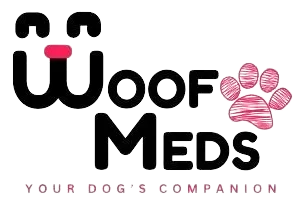The bond between a dog and its owner is often described as one of the most special and cherished relationships in the world. Central to this bond is the unspoken language of communication that exists between human and canine companions. Among the many ways dogs express themselves, one behavior that captures our attention is their habit of consistently looking at their owners.
The gaze of a dog carries with it a wealth of emotions, from adoration and trust to curiosity and dependency. As dog owners, we’ve likely experienced the feeling of being watched by our furry friends, their eyes filled with an undeniable sense of connection and understanding. In this article, we embark on a journey to unravel the mysteries behind why dogs always seem to be looking at their owners, exploring the evolutionary, emotional, and communicative aspects that contribute to this captivating behavior. Through understanding the significance of the canine gaze, we can gain deeper insight into the intricate bond that exists between humans and their beloved canine companions.
1. The Evolutionary Perspective: Understanding the Canine Gaze
To comprehend why dogs consistently gaze at their owners, it’s essential to delve into their evolutionary history and the remarkable journey that has led to their close companionship with humans. Dogs, descendants of wolves, have undergone a transformative process of domestication over thousands of years, resulting in a unique relationship characterized by mutual dependency and cooperation.
Wolves, as highly social animals, rely on complex communication signals within their packs to coordinate group activities, establish hierarchy, and maintain cohesion. Among these signals, eye contact plays a crucial role in conveying intentions, emotions, and social status. Direct eye contact can signify dominance, submission, or trust, depending on the context and individuals involved.
When early humans began to form symbiotic relationships with wolves, they inadvertently selected for traits that favored cooperative behavior and enhanced communication between the two species. Over time, wolves evolved into the domesticated dogs we know today, possessing an innate ability to understand and respond to human cues, including eye contact.
The domestication process likely reinforced the importance of eye contact as a means of bonding and cooperation between humans and dogs. Dogs learned to seek visual cues from their human counterparts, relying on their gaze to interpret intentions, anticipate actions, and establish emotional connections. In turn, humans also developed a heightened sensitivity to canine cues, forming a reciprocal relationship based on mutual understanding and trust.
The significance of the canine gaze extends beyond mere communication; it reflects the deep-rooted bond and interdependence that exists between humans and dogs. Dogs instinctively look to their owners for guidance, reassurance, and companionship, while humans derive comfort, joy, and companionship from the unwavering gaze of their canine companions.
Furthermore, the evolutionary perspective sheds light on the adaptive value of the canine gaze in facilitating cooperation and survival. In the wild, wolves rely on their pack members for support, protection, and social interaction. By maintaining eye contact with their human partners, dogs can establish a similar sense of connection and security, reinforcing their position within the human family unit.
2. Social Bonding and Emotional Connection
Beyond its evolutionary roots, the canine gaze also serves as a powerful tool for social bonding and emotional connection between dogs and their human companions. Dogs, like humans, are social animals that thrive on companionship, interaction, and emotional engagement. The act of looking at their owners reflects not only their innate need for social interaction but also the depth of their emotional attachment and loyalty.
When a dog gazes at its owner, it communicates a sense of trust, affection, and connection. The gaze is often accompanied by subtle body language cues, such as relaxed posture, wagging tail, or softened facial expressions, which further reinforce the positive emotional bond between human and canine. In return, humans respond to their dog’s gaze with warmth, affection, and a sense of security, deepening the emotional connection between them.
Studies have shown that mutual gaze between dogs and humans can trigger the release of oxytocin, often referred to as the “love hormone,” in both parties. Oxytocin plays a crucial role in social bonding, attachment, and feelings of trust and intimacy. Therefore, the act of gazing at each other not only strengthens the bond between dogs and their owners but also elicits feelings of pleasure and well-being for both.
Furthermore, the canine gaze serves as a form of communication that transcends language barriers. Dogs rely on visual cues, including eye contact, to convey their emotions, needs, and desires to their human companions. Whether they’re seeking attention, expressing affection, or signaling distress, dogs use their gaze as a means of connecting with their owners on an emotional level.
For humans, the act of being looked at by their dog can evoke feelings of comfort, happiness, and a sense of being unconditionally loved. The gaze serves as a constant reminder of the deep emotional bond and companionship that exists between human and canine, enriching our lives with a profound sense of connection and belonging.
3. Communication and Understanding
The canine gaze is not merely a passive act of observation; it is a dynamic form of communication that fosters understanding and mutual connection between dogs and their owners. Dogs rely on visual cues, including eye contact, to convey a wide range of messages, from expressing their needs and desires to seeking reassurance and guidance. By looking at their owners, dogs communicate their intentions, emotions, and state of mind, inviting their human companions to respond in kind.
One of the primary functions of the canine gaze is to solicit attention and affection from their owners. Dogs may gaze at their owners with soft, pleading eyes, signaling their desire for interaction, play, or companionship. In response, humans often reciprocate with affectionate gestures, such as petting, cuddling, or engaging in interactive play, reinforcing the bond between them.
Moreover, the canine gaze serves as a means of seeking reassurance and guidance from their human counterparts. Dogs may look to their owners for cues on how to behave in certain situations, especially when faced with uncertainty or anxiety. By maintaining eye contact, dogs signal their trust and reliance on their owners to provide direction and support, fostering a sense of security and confidence.
In addition to seeking guidance, dogs also use their gaze to express their emotional state and needs. A prolonged, soft gaze accompanied by relaxed body language may indicate contentment, happiness, or affection, while averted eyes or a tense, staring gaze may signal discomfort, fear, or distress. By paying attention to their dog’s gaze and body language, owners can better understand their pet’s emotions and respond accordingly, nurturing a deeper level of communication and empathy.
Furthermore, the canine gaze serves as a form of social referencing, where dogs observe their owner’s reactions and responses to gauge the appropriate course of action. In unfamiliar or potentially threatening situations, dogs may look to their owners for cues on how to interpret the environment and respond accordingly. By mirroring their owner’s behavior, dogs can navigate their surroundings with confidence and security, knowing that their owner is there to provide guidance and support.
4. Seeking Guidance and Direction
One of the significant functions of the canine gaze is to seek guidance and direction from their human companions. Dogs, as social animals with a strong inclination for pack behavior, naturally look to their owners for leadership, reassurance, and instruction in various situations.
When faced with uncertainty or ambiguity, dogs instinctively turn to their owners for cues on how to navigate their environment and respond appropriately. Whether it’s encountering a new experience, meeting unfamiliar people or animals, or encountering potentially threatening stimuli, dogs rely on their owner’s reactions and body language to interpret the situation and determine the appropriate course of action.
Through eye contact and attentive observation, dogs communicate their need for guidance and support, inviting their owners to provide reassurance and direction. By maintaining eye contact, dogs signal their trust and dependence on their owners to lead them safely through unfamiliar or challenging situations, reinforcing the bond of trust and mutual understanding between them.
Moreover, the canine gaze serves as a form of social referencing, where dogs observe their owner’s behavior to gauge the level of danger or uncertainty in their environment. If their owner displays calm, confident demeanor, dogs are more likely to feel secure and composed, enabling them to navigate the situation with greater ease and confidence.
In return, humans play a crucial role in responding to their dog’s gaze with empathy, understanding, and support. By acknowledging their dog’s need for guidance and direction, owners can provide reassurance, encouragement, and clear cues to help their pet feel safe and secure.
Additionally, training and positive reinforcement techniques can help strengthen the bond between dogs and their owners, empowering dogs to respond to verbal and visual cues with confidence and obedience. Through consistent training and reinforcement, dogs learn to trust their owner’s leadership and rely on their guidance to navigate the complexities of the human world.
Conclusion
In conclusion, the canine gaze is a multifaceted and deeply meaningful form of communication between dogs and their human companions. It serves as a powerful tool for social bonding, emotional connection, and seeking guidance and direction in various situations.
From an evolutionary perspective, the canine gaze reflects the enduring bond forged between humans and dogs over thousands of years of coevolution and companionship. Dogs have learned to interpret human cues and seek visual reassurance from their owners, fostering a sense of trust, loyalty, and cooperation.
Social bonding and emotional connection are central to the canine gaze, as dogs use eye contact to convey their affection, seek attention, and express their emotional needs. Mutual gaze between dogs and humans triggers the release of oxytocin, strengthening the bond and eliciting feelings of pleasure and well-being for both parties.
Communication and understanding are inherent aspects of the canine gaze, as dogs use eye contact to convey their intentions, emotions, and needs to their owners. By paying attention to their dog’s gaze and body language, owners can better understand their pet’s emotions and respond with empathy and support.
Seeking guidance and direction is another essential function of the canine gaze, as dogs turn to their owners for leadership and reassurance in uncertain or challenging situations. Through eye contact and attentive observation, dogs signal their trust and dependence on their owners to navigate the complexities of the human world.
In essence, the canine gaze is a profound expression of the unique bond and mutual reliance that exists between dogs and their human companions. It reflects the depth of their emotional connection, the strength of their social bond, and the trust and cooperation that define their relationship. By understanding and appreciating the significance of the canine gaze, owners can deepen their relationship with their furry friends and experience the joy and fulfillment that comes from sharing their lives with a loyal and loving companion.



